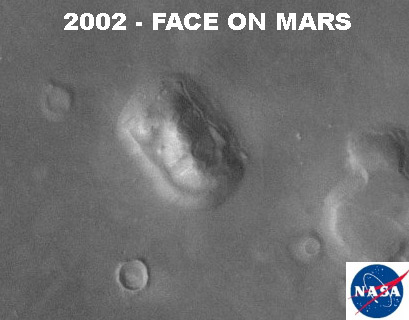The "Face" on Mars is a rock formation on the surface of Mars resembling an enormous humanoid face staring straight up into space. It is about 2.5 km long x 2.0 km wide x 0.4 km tall and is located on a flat plain known as Cydonia Mensae in Mars' northern hemisphere (41 deg. N latitude 9.5 deg. longitude). The Face and other objects described on this page were imaged by one of the Viking Orbiters in the summer of 1976. The Face was dismissed by scientists at the Jet Propulsion Laboratory as a trick of light and shadow and forgotten. The original image (Viking orbiter frame 35A72) was rediscovered by Vincent DiPietro and Gregory Molenaar, two engineers at the Goddard Spaceflight Center, several years later. They also found a second image (70A13) containing the Face under slightly different illumination with the sun about 20 deg. higher in the sky.
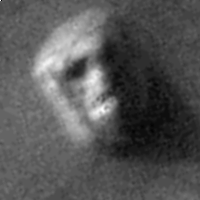 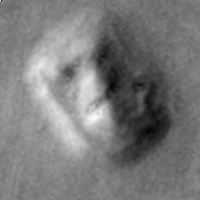
The picture on the left is from frame 35A72. It has been digitally restored with minimal contrast alteration. The picture on the right is from frame 70A13. This image more clearly shows the right shadowed side of the face. Of particular interest are crossed lines in the forehead area and fine structure in the mouth that look like teeth. Since they are in both images and are not aligned with the scan lines it is likely that they correspond to real features on the Face that are near or slightly below the resolution limit of the sensor. City and Face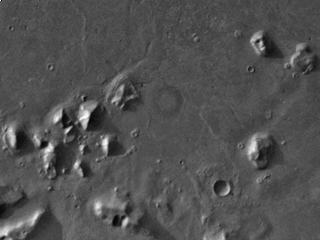
The Face is not an isolated formation. As shown in the above picture from 35A72, about 20 kilometers west-southwest of the Face are several other unusual objects (dubbed the "City" by author Richard Hoagland). Where the Face is a rounded formation (geologists would call it a mesa or knob) the City contains an assortment of pyramidal objects with sharp angular sides. Fortress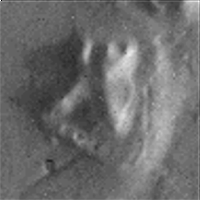 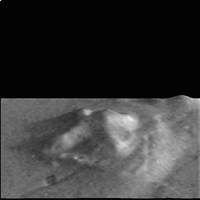
Perhaps the most unusual object within the City is a pyramidal object (the "Fortress") that appears to have been stripped down almost to its base revealing an enclosed inner space. The perspective view (above right) was generated from the overhead view (above left) using a single image shape-from-shading algorithm. Fine scale detail in the restored imagery includes a regular pattern of indentations along the lower wall of the structure and linear features on the terrain to the right. D&M Pyramid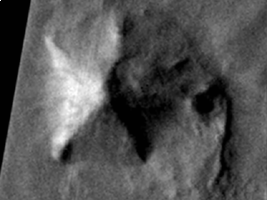
About 20 kilometers south-southwest of the Face is a larger pyramidal structure first noticed by DiPietro and Molenaar. The D&M pyramid appears to have five sides. One of the sides is shadowed and two of the sides appear to be degraded. The south face appears to be oriented almost exactly due south. |

